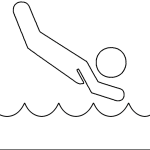Orthopedic Impairment
Overview
Orthopedic impairment is
a severe orthopedic impairment that adversely affects a child’s educational performance. The term includes impairments caused by a congenital anomaly, impairments caused by disease (e.g., poliomyelitis, bone tuberculosis), and impairments from other causes (e.g., cerebral palsy, amputations, and fractures or burns that cause contractures). (IDEA)
One-half of one percent of students qualifying for services under the IDEA have an orthopedic impairment designation (National Center for Education Statistics, 2022).
The orthopedic impairment category is not a very prevalent type of disability among school-aged children. For students to meet the criteria for this disability type, the orthopedic impairment must adversely affect their ability to perform in an educational environment:
This disability may interfere with a student’s ability to walk, write, or perform other physical tasks in the classroom and laboratory setting. It might also affect the student’s ability to communicate with others, hindering their ability to respond to questions orally. Furthermore, they might also have additional disabilities that can affect their educational performance, including…learning disabilities, perceptual problems, distractibility, disorganization, visual-motor deficits, restlessness, and visual abnormalities. These various conditions all serve to affect the student’s coordination and mobility as well as their ability to communicate, learn, and adjust. Orthopedic impairments may also affect the student’s endurance in performing various tasks, and they might tire more easily. Due to the hands-on nature of agricultural education, instructors should plan ahead to meet the needs of learners in their classes with orthopedic impairments. (LaRose et al., 2019, pg. 1)
Strengths
Like students with multiple disabilities, students with orthopedic impairments bring wide and varied strengths to their educational experiences. The specific mitigating factors of the disability determine the student’s strength. Students with orthopedic impairments may be unable to move freely, but they could have very strong academic skills. Others may have a strong sense of humor, be very loving and social, or even have strong sports skills when provided with appropriate mobility items such as wheelchairs or artificial limbs.
Needs
The needs of students with orthopedic impairments vary depending on their degree of disability. Some students may struggle with their motor skills or ability to perform daily tasks, whereas others may struggle with their communication ability (Kansas State Department of Education).
 Reflection
Reflection
Supporting Students with Orthopedic Impairment
The section below explains some strategies for supporting students experiencing orthopedic impairment. Based on what you have read so far, what strategies do you think might be useful for supporting students experiencing orthopedic impairment?
Common Teaching Strategies
Project IDEAL offers the following ways to help promote learning among students with orthopedic impairment:
- Special seating arrangements to develop useful posture and movements.
- Instruction focused on development of gross and fine motor skills.
- Availability of suitable augmentative communication and other assistive devices.
- Awareness of medical condition and its affect on the student (such as getting tired quickly) (Orthopedic Impairments).
 Deeper Dive
Deeper Dive
Orthopedic Impairment
For more information about orthopedic impairment, review the following resources:
References
Heller, K. W., Swinehart-Jones, D. (2003). Supporting the Educational Needs of Students with Orthopedic Impairments. Georgia State University. Retrieved from https://files.eric.ed.gov/fulltext/EJ678650.pdf
LaRose, S.E., Thoron, A.C., Colclasure, B.C. (2019). Teaching students with disabilities: Orthopedic impairment. IFAS Extension University of Florida. Retrieved from https://edis.ifas.ufl.edu/publication/WC262
National Center for Education Statistics. (2022). Students With Disabilities. Condition of Education. U.S. Department of Education, Institute of Education Sciences.
U.S. Department of Education. (2018). Sec. 300.8 Child with a disability. Retrieved from https://sites.ed.gov/idea/regs/b/a/300.8.ufl.edu/publication/WC262
means a severe orthopedic impairment that adversely affects a child’s educational performance
